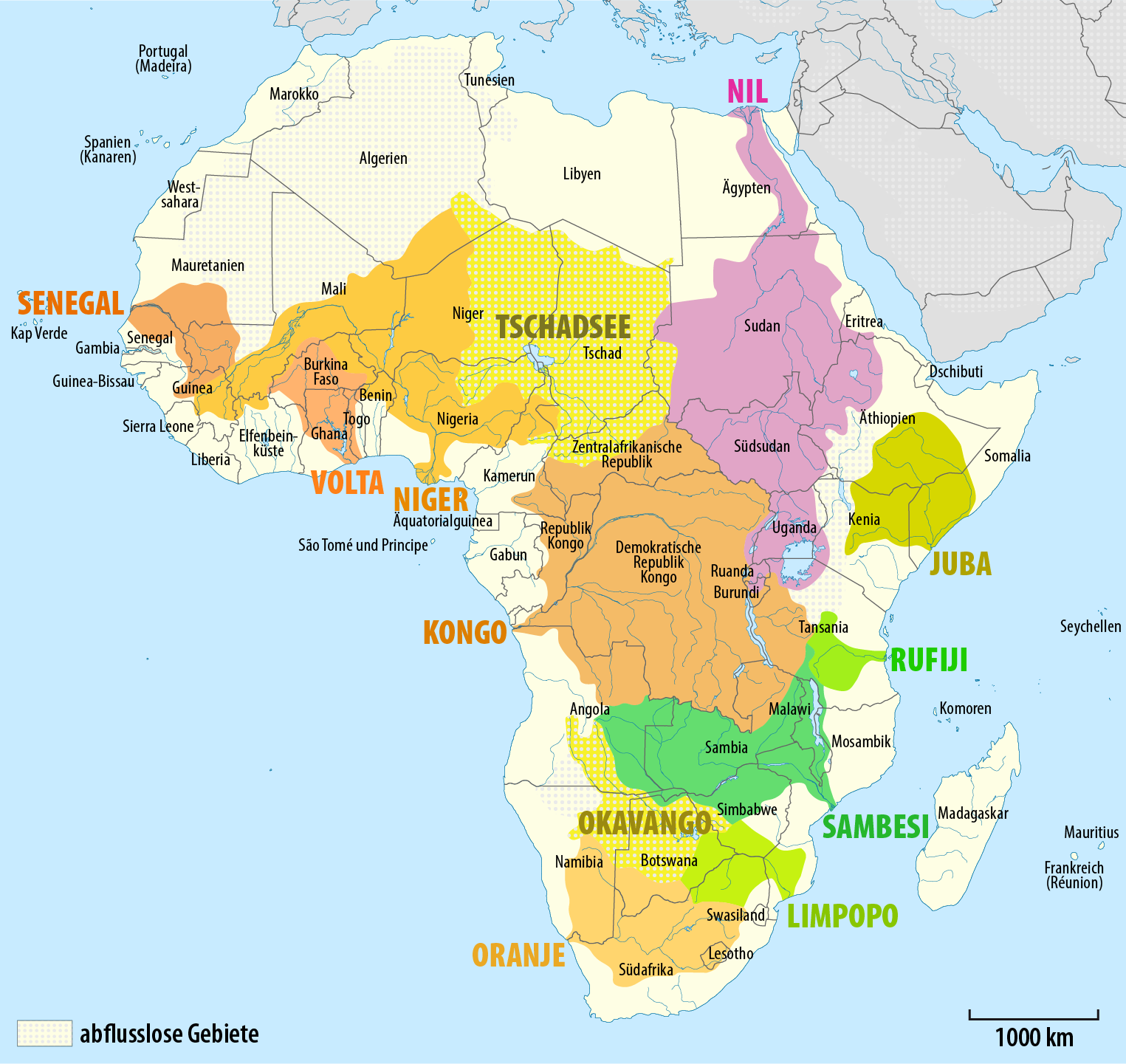Geografia | lkjh

[ Del punt de vista de les ecoregions, el mediterrà i els deserts formen part del Paleartic, juntament amb Europa, Rússia, Orient mitjà i Xina]
[Mediterrà i conca del Nil]: Clima mediterrani costa nord, muntanyes de l’Atlas, conca del Nil, prats inundats.
Sahara and Arabian deserts. Deserts: de la latitud 35 fins a 15, uns 2000 km. A great belt of deserts, including the Atlantic coastal desert, Sahara desert, and Arabian desert, separates the Palearctic and Afrotropic ecoregions. This scheme includes these desert ecoregions in the palearctic realm; other biogeographers identify the realm boundary as the transition zone between the desert ecoregions and the Mediterranean basin ecoregions to the north, which places the deserts in the Afrotropic, while others place the boundary through the middle of the desert.]
El reialme Afrotropical és dividit en 8 zones, una de la península aràbiga que es veu a Orient mitjà)
- Sahel and Sudan. Franja semiàrida al voltant de 15º latitud. Savana d’acàcia. [Travessada pels rius Senegal, Níger i alt Nil]. South of the Sahara, two belts of tropical grassland and savanna run east and west across the continent, from the Atlantic Ocean to the Ethiopian Highlands. Immediately south of the Sahara lies the Sahel belt, a transitional zone of semi-arid short grassland and acacia savanna. Rainfall increases further south in the Sudanian Savanna, also known simply as the Sudan, a belt of taller grasslands and savannas. The Sudanian Savanna is home to two great flooded grasslands, the Sudd wetland in South Sudan, and the Niger Inland Delta in Mali. The forest-savanna mosaic is a transitional zone between the grasslands and the belt of tropical moist broadleaf forests near the equator. [Muntanyes Simien]
- Boscos Tropicals. [La vall del Congo] Forest zone The forest zone, a belt of lowland tropical moist broadleaf forests, runs across most of equatorial Africa’s intertropical convergence zone. The Upper Guinean forests of West Africa extend along the coast from Guinea to Togo. The Dahomey Gap, a zone of forest-savanna mosaic that reaches to the coast, separates the Upper Guinean forests from the Lower Guinean forests, which extend along the Gulf of Guinea from eastern Benin through Cameroon and Gabon to the western Democratic Republic of the Congo. The largest tropical forest zone in Africa is the Congolian forests of the Congo Basin in Central Africa. A belt of tropical moist broadleaf forest also runs along the Indian Ocean coast, from southern Somalia to South Africa.
- East African grasslands and savannas Acacia-Commiphora grasslands; Serengeti [Kenia Tanzania]
- Eastern Africa’s highlands. Afromontane region, from the Ethiopian Highlands [Simien] to the Drakensberg Mountains of South Africa, including the East African Rift. Distinctive flora, including Podocarpus and Afrocarpus, as well as giant Lobelias and Senecios. Ethiopian Highlands; Albertine rift montane forests; East African montane forests and Eastern Arc forests
- Southern African woodlands, savannas, and grasslands Miombo woodlands; Zambezian mopane and Baikiaea woodlands; Bushveld
Deserts of southern Africa Namib Desert; Kalahari Desert; Karoo; Tankwa Karoo; Richtersveld. EL riu Okavango va des d’Angola fins a un delta al desert de Kalahari. EL ambeze desemboca a l’ïndic. El riu Orange travessa sudàfrica per acabar a l’Atlàntic. - Cape floristic region The Cape floristic region, at Africa’s southern tip, is a Mediterranean climate region that is home to a significant number of endemic taxa, as well as to plant families like the proteas (Proteaceae) that are also found in the Australasian realm
- Madagascar and the Indian Ocean islands Madagascar and neighboring islands form a distinctive sub-region of the realm, with numerous endemic taxa like the lemurs. Madagascar and the Seychelles are old pieces of the ancient supercontinent of Gondwana, and broke away from Africa millions of years ago. Other Indian Ocean islands, like the Comoros and Mascarene Islands, are volcanic islands that formed more recently. Madagascar contains several important biospheres, as its biodiversity and ratio of endemicism is extremely high.
